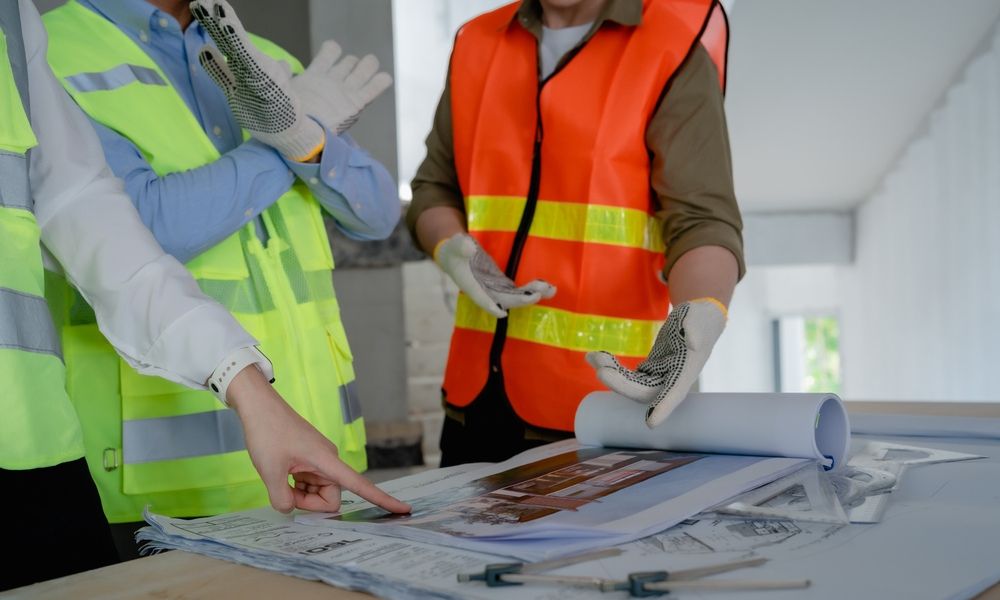Last updated on December 30th, 2024 at 11:54 am
In the construction industry, effective planning is critical for project success, and one of the essential steps in this process is material takeoff. This guide aims to demystify material takeoff for beginners, explaining what it is, why it’s important, and how to perform it accurately. We’ll also touch on the tools and techniques that make this task easier and more efficient.
What is Material Takeoff?
Material takeoff, often abbreviated as MTO, is the process of identifying and listing all the materials needed for a construction project. It’s a systematic calculation of quantities for each type of material, such as concrete, steel, wood, insulation, and more.
A material takeoff is a vital component of construction estimating, ensuring that contractors and project managers have a clear understanding of the resources needed to complete the job. The list created during a material takeoff is then used to determine costs, manage budgets, and minimize waste.
Why is Material Takeoff Important?
Material takeoff serves multiple critical purposes, including:
- Accurate Budgeting: By understanding material needs, you can better estimate project costs, helping to ensure the budget aligns with client expectations.
- Minimizing Waste: Knowing the exact quantities required reduces the likelihood of over-ordering or under-ordering, both of which can impact profitability.
- Resource Planning: Material takeoff enables better scheduling and resource allocation, making it easier to maintain project timelines.
Without a precise takeoff, projects risk cost overruns, delays, and inefficiencies.
Key Components of a Material Takeoff

Material takeoff involves categorizing and measuring different types of construction materials. Here are the primary categories often included:
Structural Materials:
This includes foundational elements such as concrete, steel, beams, and columns.
Framing Materials:
Materials required for walls, floors, and roofs, including lumber, trusses, and joists.
Finishing Materials:
Elements for finishing touches, such as drywall, tiles, paint, and flooring.
Mechanical, Electrical, and Plumbing (MEP) Materials:
These include piping, wiring, and HVAC materials essential for the building’s systems.
Steps to Perform a Material Takeoff
Performing a material takeoff requires attention to detail and a systematic approach. Here’s a step-by-step guide to get you started:
Step 1: Gather and Review Project Documents
Start with project blueprints, drawings, and specifications. Understanding the scope of work will provide the foundation for your takeoff. Ensure that all plans and documents are up to date, as any errors here can affect accuracy later.
Step 2: Categorize Materials by Type
Divide materials into categories such as structural, finishing, and MEP. This makes the takeoff process more organized and helps in future budgeting and resource planning.
Step 3: Measure and Calculate Quantities
Use the project drawings to measure each material type. You can do this manually by calculating quantities based on dimensions in the drawings, or you can use specialized software for a faster, more accurate process.
Step 4: List Materials and Quantities
Create a detailed list that specifies each material type, quantity, and unit of measurement (e.g., cubic meters of concrete, linear feet of lumber). This list forms the core of the material takeoff.
Step 5: Verify and Cross-Check
After completing the initial takeoff, verify and cross-check all quantities and measurements. This step is crucial to catch any potential errors before proceeding.
Tools and Software for Material Takeoff
With advancements in technology, software solutions have become essential for efficient material takeoffs. Here are some popular tools used in the industry:
Bluebeam Revu:
A popular PDF-based software that allows users to measure materials directly from digital blueprints. It provides a range of tools to streamline takeoffs.
PlanSwift:
Known for its user-friendly interface, PlanSwift enables accurate measurements and calculations, making it easier for beginners to perform takeoffs.
Kubla:
Specialized in earthworks, Kubla is ideal for projects that involve extensive groundworks, allowing users to calculate excavation volumes and earthworks quantities.
Choosing the right software can reduce errors, improve accuracy, and save time, especially for large or complex projects.
Manual vs. Digital Material Takeoff
Traditionally, material takeoffs were done manually, which involved reviewing paper blueprints and making calculations with rulers, calculators, and spreadsheets. Today, digital material takeoff tools are more common, offering significant advantages:
- Accuracy: Digital tools help eliminate human errors that can occur with manual calculations.
- Time Efficiency: Software solutions speed up the takeoff process, allowing estimators to handle more projects in less time.
- Ease of Updates: Digital takeoffs can be easily modified if there are changes in project specifications, saving time on revisions.
Despite these advantages, some professionals still use manual methods for smaller projects or when digital resources are unavailable. Understanding both approaches can be beneficial.
Common Challenges in Material Takeoff
While material takeoff is essential, it comes with its own set of challenges:
- Incomplete or Inaccurate Plans: When plans lack sufficient detail, it’s challenging to determine exact material quantities.
- Complex Project Specifications: Larger projects with multiple phases or unique requirements can complicate the takeoff process.
- Human Error: In manual takeoffs, miscalculations or misinterpretations of plans can lead to costly errors.
To overcome these challenges, always double-check your work, use digital tools, and collaborate closely with the project team to ensure clarity and accuracy.
Tips for Beginner
If you’re new to material takeoff, here are a few tips to improve your skills:
- Start with Smaller Projects: Build your confidence by working on smaller projects where takeoff requirements are straightforward.
- Practice with Takeoff Software: Familiarize yourself with digital tools to increase accuracy and efficiency.
- Review Completed Projects: Studying material takeoffs from completed projects can help you understand common pitfalls and learn best practices.
Career Opportunities in Material Takeoff and Estimating
Proficiency in material takeoff opens up various career paths in construction, including roles such as:
- Quantity Surveyor: Responsible for managing costs and budgets throughout a project lifecycle.
- Cost Estimator: Specializes in estimating overall project costs based on materials, labor, and other factors.
- Project Manager: Oversees the entire construction process, ensuring materials and resources align with project timelines and budgets.
Becoming Proficient in Material Takeoff
Mastering material takeoff requires a blend of technical knowledge, attention to detail, and proficiency with software tools. For those looking to excel, a formal course in quantity surveying or construction estimating can be beneficial, providing the foundational skills and best practices needed to succeed.
Conclusion
Material takeoff is a critical skill in construction, ensuring projects stay on budget and on time. For beginners, understanding the basics and learning to leverage modern tools can make the process more manageable. With practice, you’ll be able to perform material takeoffs accurately and efficiently, setting the foundation for a successful career in construction.
Start Your Journey with Our Quantity Surveying Course
Ready to deepen your knowledge of material takeoff and construction estimating? Enroll in our Online Quantity Surveying Course today! Designed for beginners and professionals alike, this course provides a comprehensive understanding of material takeoffs, cost estimating, and project management essentials. Start your journey to becoming a skilled quantity surveyor, gain industry-recognized skills, and open doors to new career opportunities.




